|
ULB LOG 20 --- 14th May 08
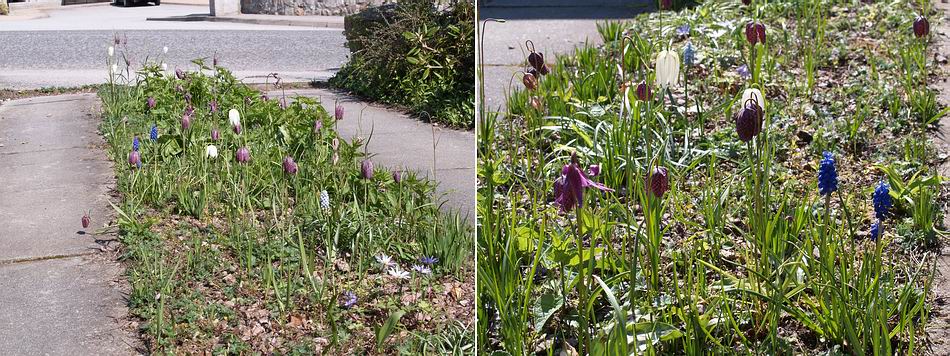
Bulbs in front drive
My long term project of establishing as many plants in the central gravel section of our drive is progressing very well. I originally sowed seed of Geranium sanguineum there and it grows well, providing a beautiful purple/pink show of flowers in early summer. I then started scattering spare bulb seeds onto the gravel surface and now there is significant self seeding especially from Fritillaria pyrenaica. Because of the compacted deep layer of gravel it is impossible to plant directly into this space so sowing seeds is the only way. Erythronium, crocus, narcissus, cyclamen, muscari are among the other bulbs we now have flowering in the drive and all sorts of self sown seedlings are appearing now.
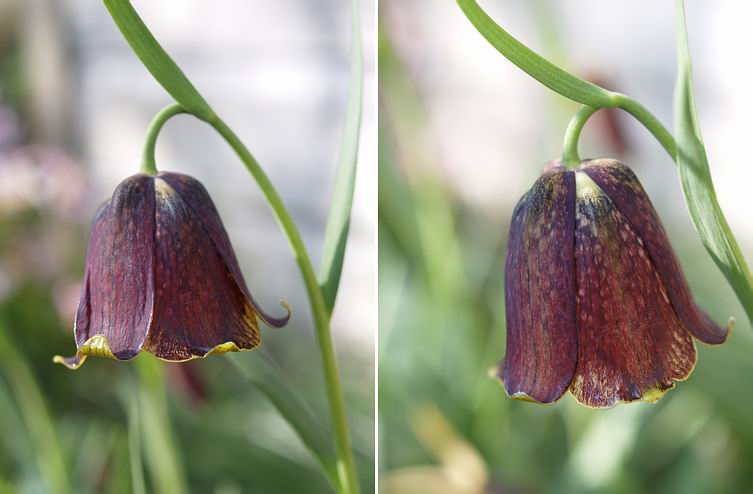
Fritillaria pyrenaica
Last weeks beautiful sunshine has brought on the later flowering frits such as Fritillaria pyrenaica, a variable species from seed which can produce anything from pure yellow to deep brown flowers - the insides are always yellow. I find this is a frit that does not like being grown in a pot for any length of time so if you want to show it is best to grow it in a bed then lift the bulbs in the summer dormancy pot them up for the spring show then release them back into the garden the following summer - if you have two clumps to alternate between you can always have a pot for the show benches.
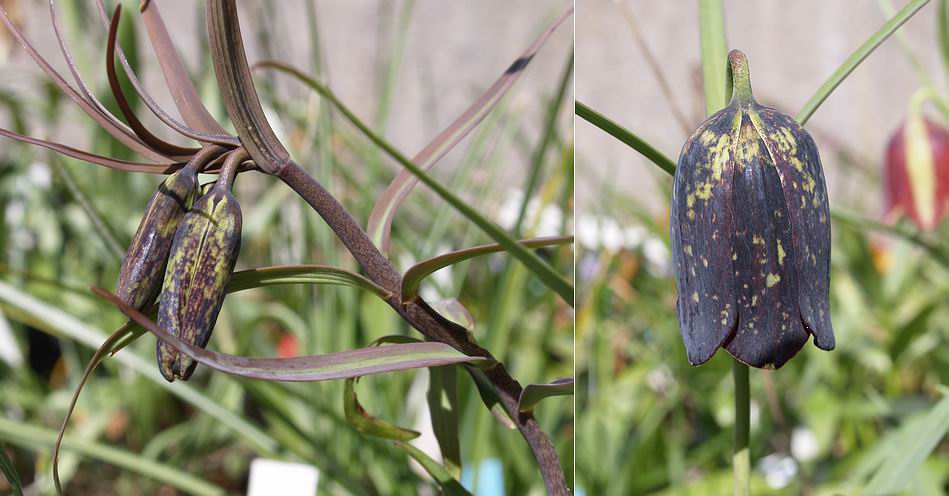
Fritillaria cirrhosa
The beautiful Chinese species Fritillaria cirrhosa is in flower; it is also a very variable species.
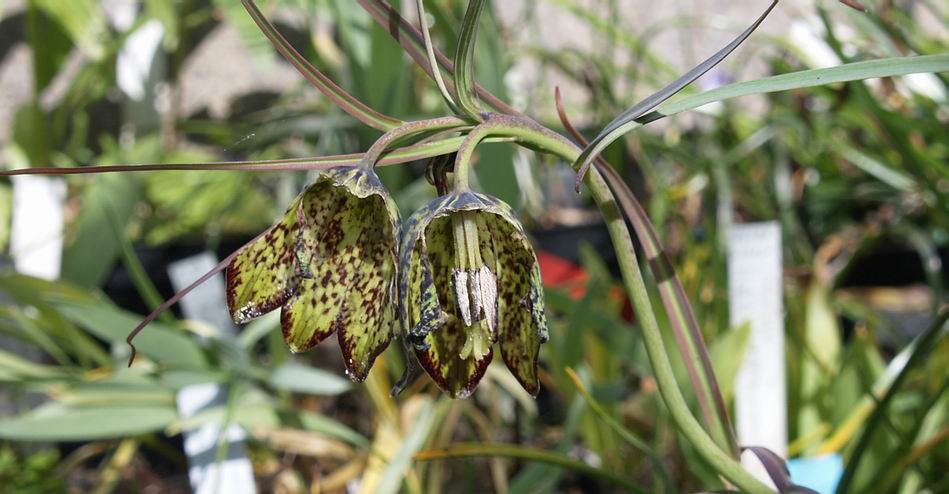
Fritillaria cirrhosa flowers
Although I do section flowers sometimes to show the interior I have not done this here. There is hardly a flower or a leaf in our entire garden that is not chewed by something this year.
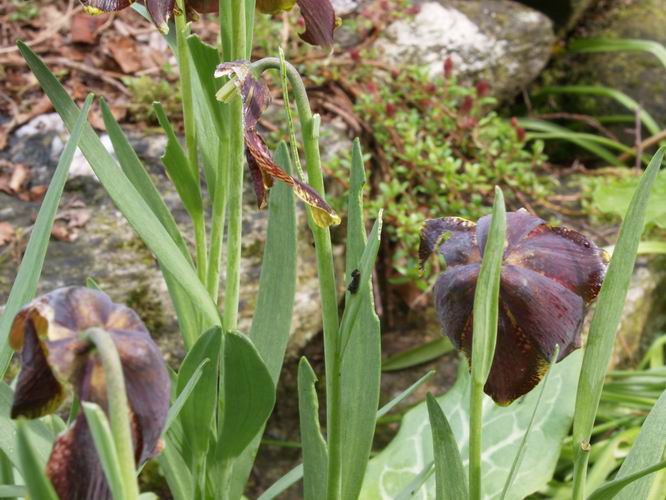
Fritillaria pyrenaica 'Braeside' chewed
Here is a fine clump of Fritillaria pyrenaica 'Braeside' that has had some of its flowers completely chewed off as well as that the leaves are also under attack. There are some clues to the culprits in this picture - the shape of the chewed areas and the little brown parcel of poo on the leaf suggests either a caterpillar or some kind of snail.
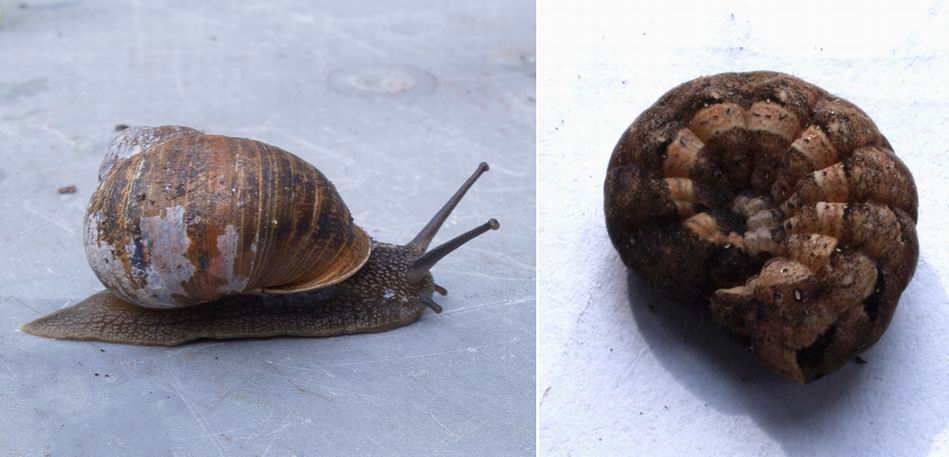
Snail and cut worm grub
Determined to fight back and not wanting to revert to chemicals I have been waging night time hunting expeditions in the garden. Here are two of the worst culprits; the large garden snail brought for food over to the UK by the Romans when they invaded in the first century AD - thank you very much - and as if that was not bad enough they also introduced rabbits but we are not bothered by them in the garden now. The caterpillar often called a cut worm is that of a night flying moth of some type and it is a ferocious feeder. They live under the surface or in ground debris during the day and come out to feed all night and that way they avoid being eaten by the birds.
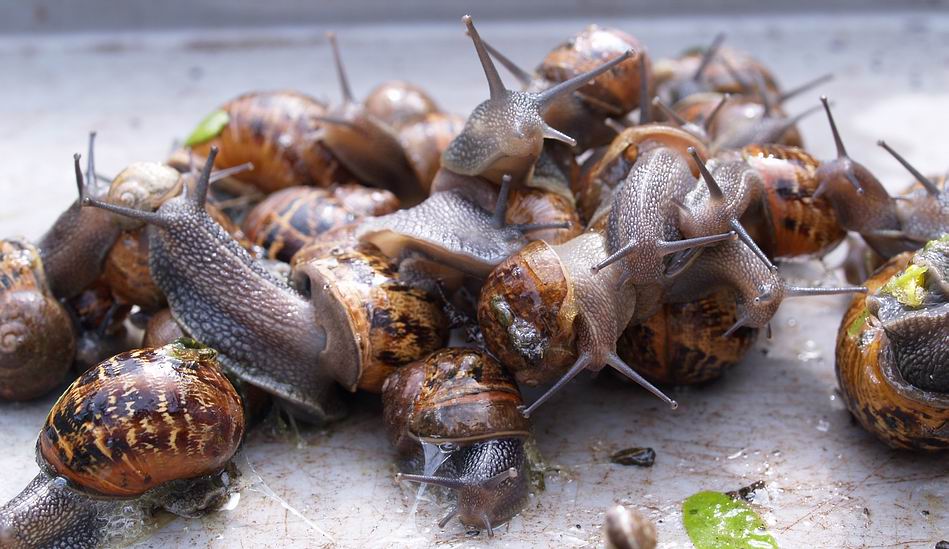
Snail collection
Having had a few mild winters and after last years cool moist summer slugs and snails are at an all time high and I must try and get them under some form of control - this is just a small collection from one brief night time sortie.
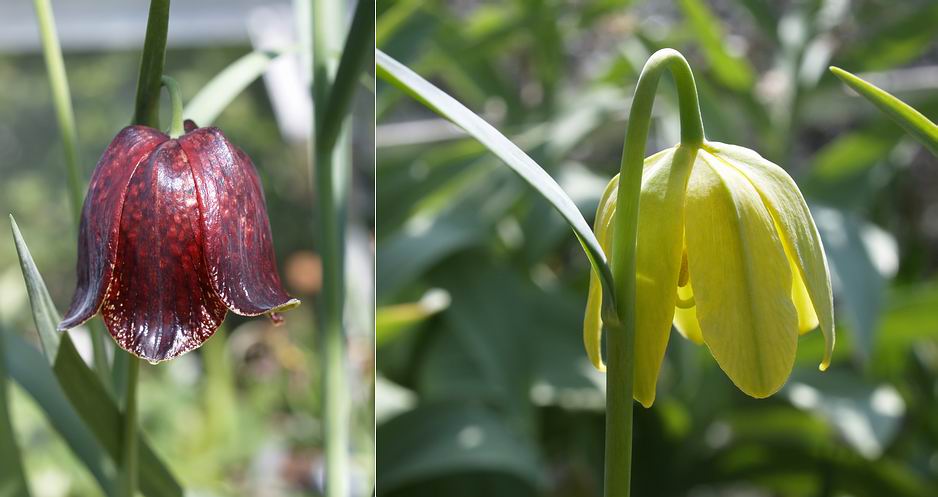
Fritillaria meleagroides and affinis yellow
Under glass I am able to keep these pests under control so I can mostly enjoy the fritillaria flowers intact. Similar in colour to F. pyrenaica is Fritillaria meleagroides which has a very glossy sheen to the tepals whereas pyrenaica has a mat finish. I used to have lots of F. affinis yellow forms but a number of years ago I virtually lost them all and if it had not been for a few surviving rice grains I would have none left. This is the big advantage of rice producing species - in a bad year when the main population of mature bulbs rots off some rice will survive to build up and flower again.
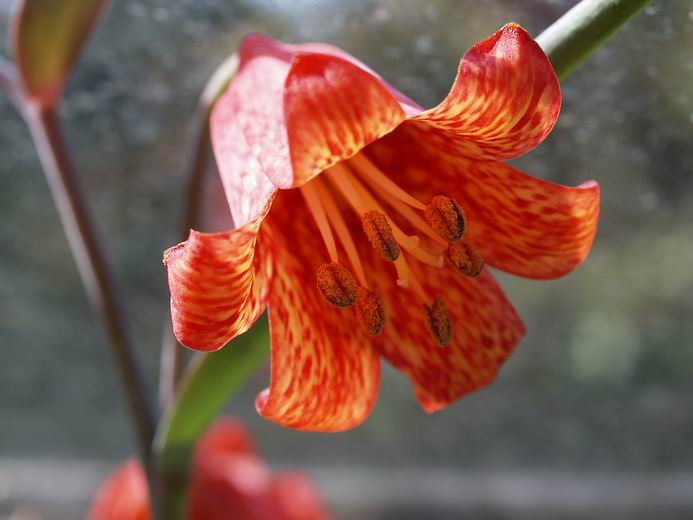
Fritillaria recurva
Fritillaria recurva is another North American rice grain producing bulb and perhaps the most striking frit of them all. It has bright scarlet flowers to attract humming birds which are its main pollinator in the wild and the flower rewards the bird with sweet nectar which is produced in such profusion that if you touch a flower droplets will fall on to your hand - do not waste the drop lick it up, it is sweet and delicious.
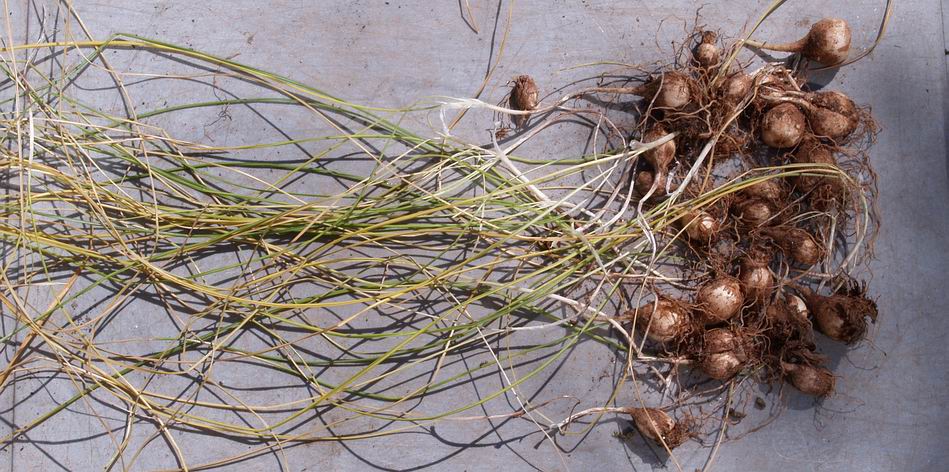
Crocus with yellow leaves
Last week I warned you against watering bulbs whose leaves have started to turn yellow as this indicates the bulb is going into its dormancy. This picture illustrates this well; as you can see that the roots of this crocus have shut down as the leaves are slowly going yellow - any water at this stage would be detrimental and could cause rotting of the corms.
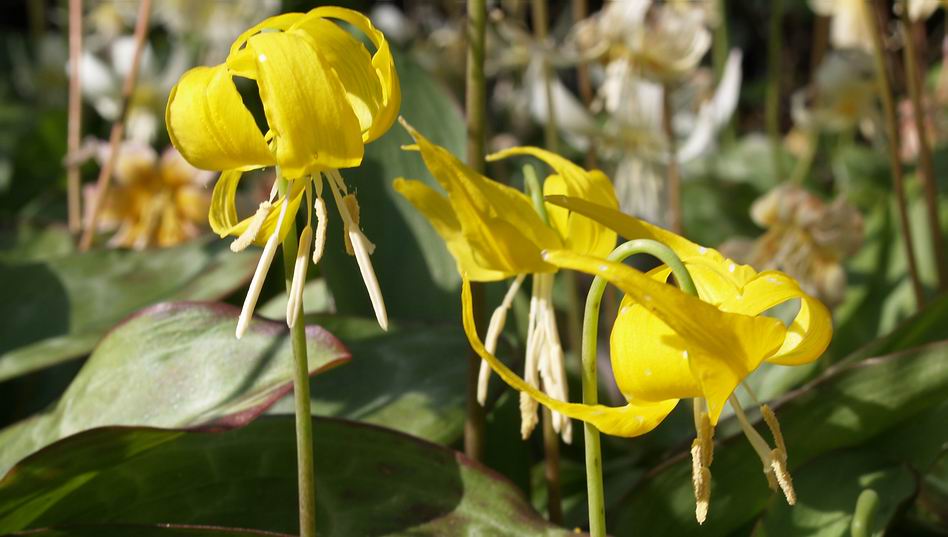
Erythronium grandiflorum pallidum
We are into the end game of the Erythronium flowers with a late form of Erythronium grandiflorum here seen as the variety pallidum with pale anthers.
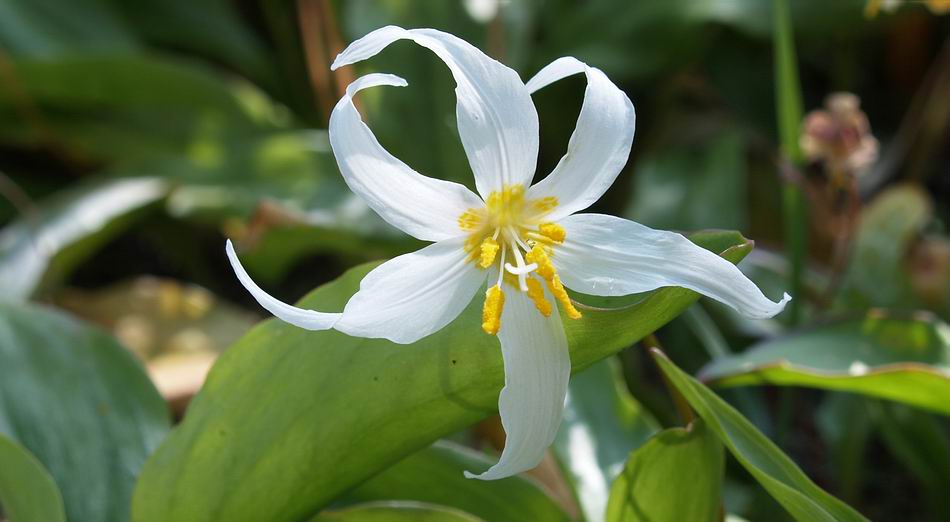
Erythronium montanum
Always the last to flower for us is Erythronium montanum the very beautiful pure white flowers can be 10 cms across. Although it is the last to flower it is also the first to set seed - obviously because it grows at high altitude close to the snow melt it has adapted to a very short growing season.
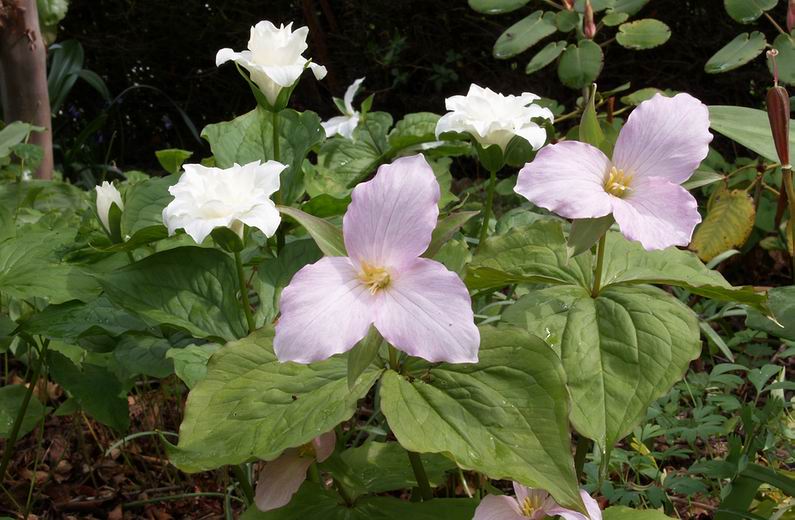
Trillium grandiflorum roseum and double form
Here are two of the most sought after Trilliums, Trillium grandiflorum double form and Trillium grandiflorum roseum. I do not find that these increase very quickly and I put that down to the fact that they are both very old selections that have lost the vigour of youth.
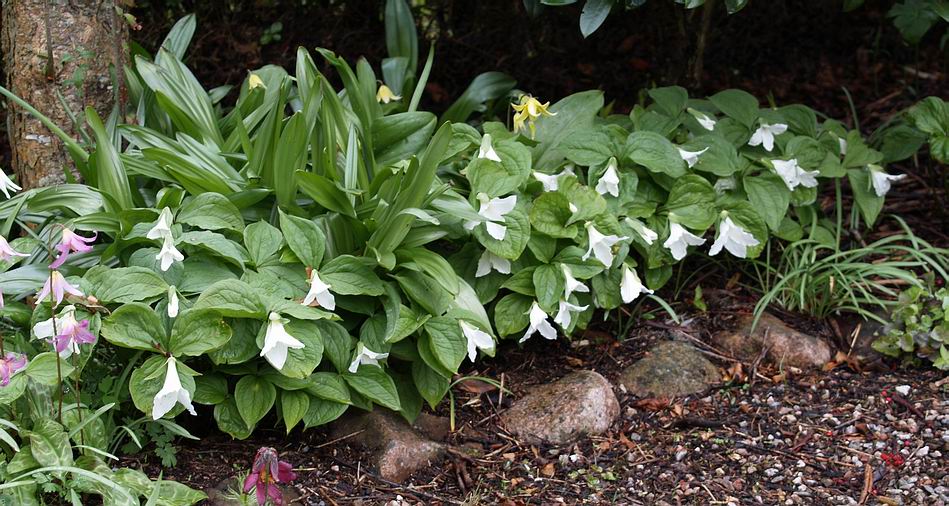
Trillium grandiflorum clumps
Seed raised plants have all that vigour of youth and increase well - this is the clump that I divided over the last two years and showed on the bulb log. I will remind you now that the best time to split trilliums is just as the flowers start to go past because it is shortly after that the plants will start to form new roots that feed the plant through next spring's growth. It is my belief that it is better to do some damage to the old foliage that will soon die back any way than it is to damage the new roots in which is invested next years growth. As proof you can see that these plants are flowering very freely despite having been lifted and pulled apart last year.
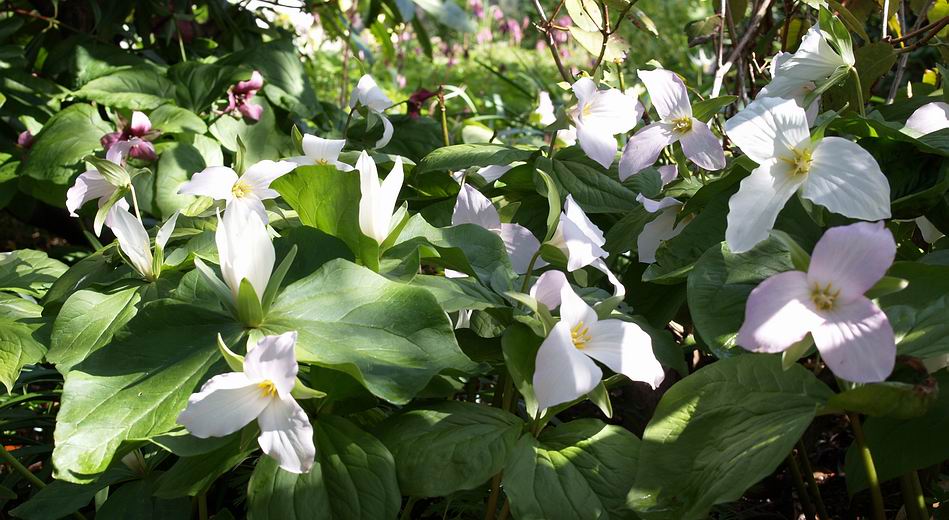
Trilliums
The joy that I get from seeing these mass clumps of mixed trilliums flowering freely and knowing that I raised them from seed encourages me to sow ever more seeds. Also I am thinking ahead to when I might lift and divide some of these plants especially the better pink forms - maybe next year.
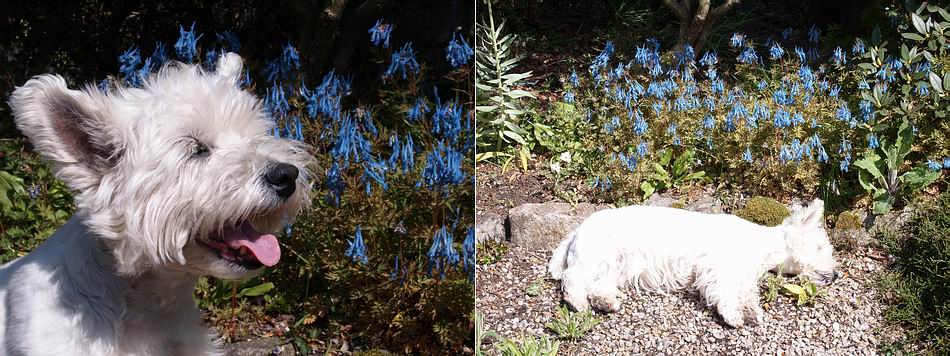
Corydalis flexuosa and Lily
Enjoying the warm sunshine is the lovely blue Corydalis flexuosa and Lily who found it all too much, so laid down for a rest.
^ back to the top ^
|

